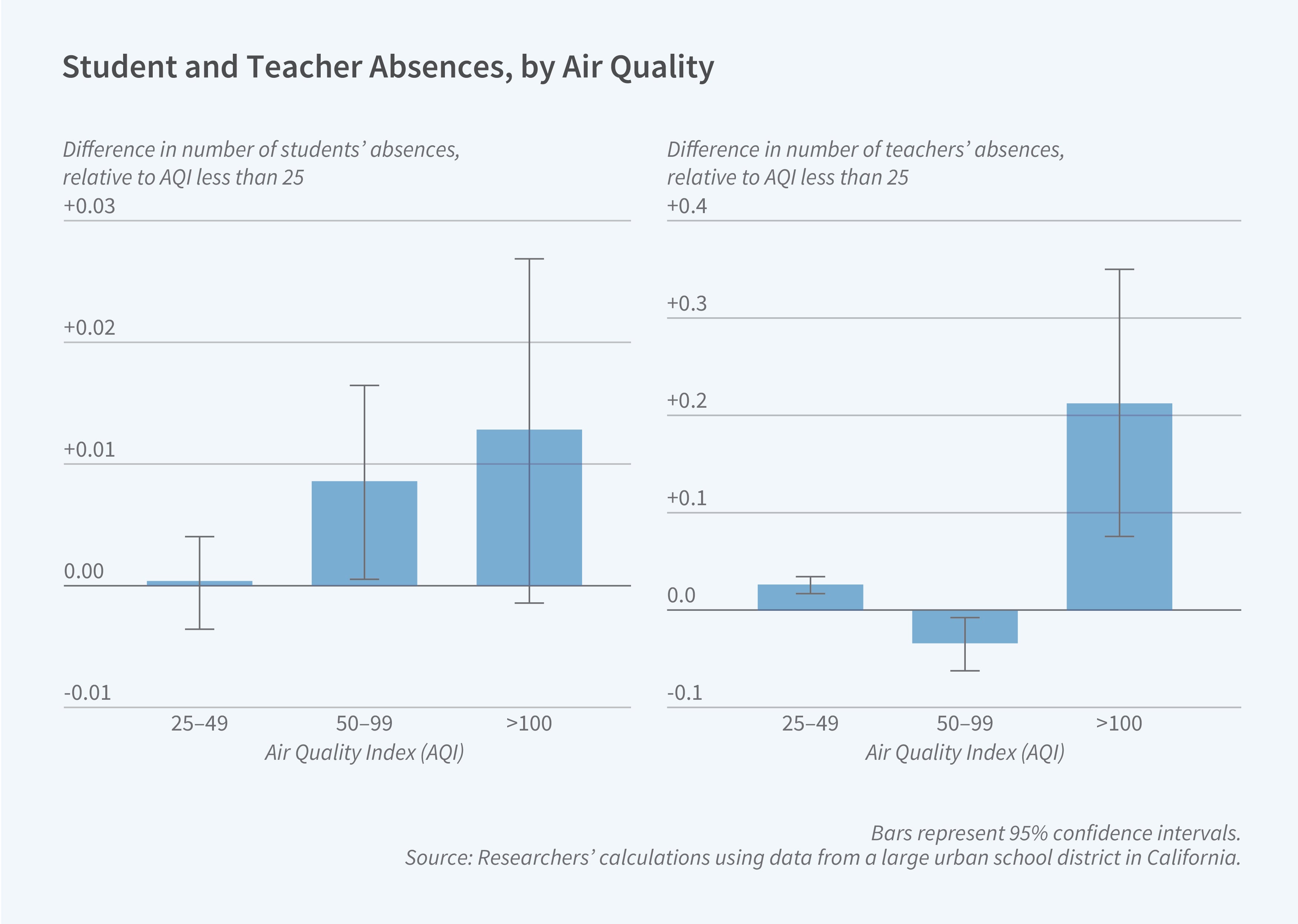Daily Air Pollution Exposure and Schooling

Over 6 million children in the United States attend public schools located within 250 meters of a major roadway. In The Effects of Daily Air Pollution on Students and Teachers (NBER Working Paper 33549), Sarah Chung, Claudia Persico, and Jing Liu examine how daily variation in ambient air pollution influences student and teacher behavior in school settings.
They study comprehensive administrative data from a large urban school district in California spanning 2003 to 2020. To address measurement error in pollution exposure and reduce concerns about endogeneity, such as the issue of schools in high-pollution areas potentially attracting students from disadvantaged backgrounds, the researchers implement an instrumental variables strategy using daily variation in wind direction. Specifically, daily wind direction serves as an instrument for local air pollution exposure, measured by PM2.5 concentrations. On days when the wind blows from a nearby highway toward a school, for example, schools located downwind experience higher pollution exposure, while schools located upwind remain relatively unaffected.
Elevated air pollution levels increase student and teacher absenteeism as well as the number of disciplinary referrals.
The researchers find that a 10µg/m3 increase in daily PM2.5 concentration is associated with a 5.7 percent increase in full-day student absences over a three-day window beginning with the day of exposure. It also corresponds with a 28 percent rise in office discipline referrals, with particularly pronounced effects on referrals for violent behavior, defiance, and interpersonal conflicts, and a 13.1 percent increase in teacher absences. The researchers estimate that a sustained 10µg/m3 increase in PM2.5 for the entire school year would result in approximately 4.9 additional absence days per student, or 355,647 absences across the district.
The research reveals significant heterogeneity in pollution effects across demographic groups. Black students experience the largest impacts. Specifically, a 10µg/m3 increase in daily PM2.5 leads to a 9.6 percent increase in full-day absences and a 32 percent increase in office referrals for violent behavior. Hispanic students and those from lower-income households also show heightened sensitivity to pollution exposure. These disparities are reflected in school-level analyses: schools serving predominantly lower-income populations exhibit substantially larger effects on both absences and behavioral issues than schools serving higher-income students.
The researchers also identify a dose-dependent relationship between air pollution levels and educational outcomes. Days with Air Quality Index (AQI) values exceeding 100 are associated with the largest effects on both student and teacher absences and on disciplinary referrals. This nonlinear response to pollution intensity suggests that reducing pollution in urban areas might yield disproportionate benefits for school functioning.


